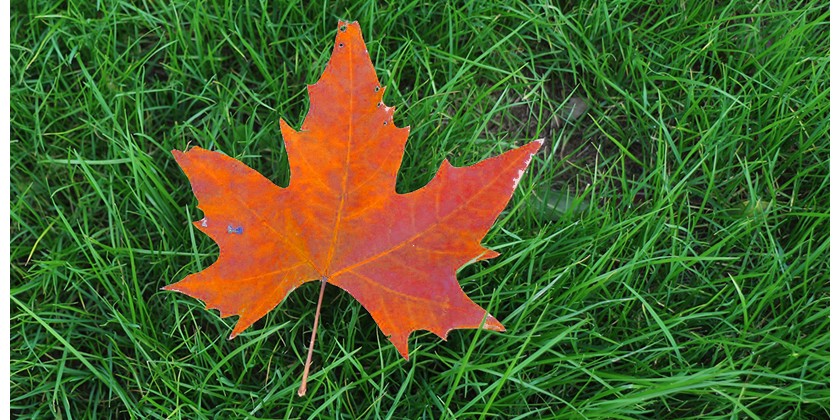
Many people think of spring as the conventional time to fertilize their lawns, however, fall is also an excellent season to give your lawn a boost and may provide better results than fertilizing only in the spring.
Fall fertilizing not only helps grass regain its strength before frigid winter temperatures, it can also help strengthen your lawn for next summer. Cool season grasses, such as bent grass, Kentucky bluegrass, fescue and ryegrass varieties, all benefit from fall fertilizing. This helps grass develop a deep and thick root system to support it through the temperature extremes of winter and summer.
CHOOSING A FERTILIZER:
A soil test of your lawn will help determine the nutrients needed. The three core ingredients in lawn fertilizers are nitrogen, phosphorous and potassium, (N-P-K):
- Nitrogen – builds strong grass and roots, keeps grass green, and protects it from diseases.
- Phosphorus – also helps build strong roots. A lawn with adequate phosphorus is more tolerant to heat, cold and drought.
- Potassium – helps to protect the grass and roots from winter’s extreme cold temperatures.
Some fertilizers may include gypsum to help loosen heavy soils and improve the absorption of nutrients.
The fertilizer container will show the N-P-K concentration by using a series of three numbers, such as 5 – 10 – 5. The larger numbers indicate a greater concentration of that particular nutrient. When applying fertilizer be sure to check the manufacturer’s application instructions to determines the coverage area, to ensure you are using the correct amount for your lawn.
It is also beneficial to test the soil’s pH level to reveal its chemistry. If the pH level shows a need to reduce acidity, apply lime. If it is too alkaline you will need to apply sulfur.
BENEFITS OF USING A PRESSURE SPRAYER TO APPLY FERTILIZER:
- Pressure sprayers give excellent control over the application; there is less waste which saves money and is better for the environment.
- Pressure sprayers are easy to use, and reduce user fatigue over trigger sprayers and walk-behind spreaders
- Liquid fertilizers provide control by delivering an application that is more even than granule application, which can accumulate in areas.
- Liquids spread outward and are well absorbed through the grass and the soil.
- Because it enters the soil faster than granular, liquid fertilizer absorbs into the roots more efficiently.
OTHER TIPS:
- Lawns with shade typically require less fertilizer, since grass in shaded areas grows more slowly.
- Check your fertilizer bottle for application scheduling. Up to three treatments, spaced over several weeks, is typically recommended for fall fertilization.
- Fertilizer works more quickly when the ground is moist. It is recommended that you water your lawn before applying fertilizer, or apply it after it has rained.
Pressure sprayers are an excellent tool for applying liquid and water-soluble powder fertilizers. For information on Solo Sprayers see: https://us.solo.global/3-sprayers
